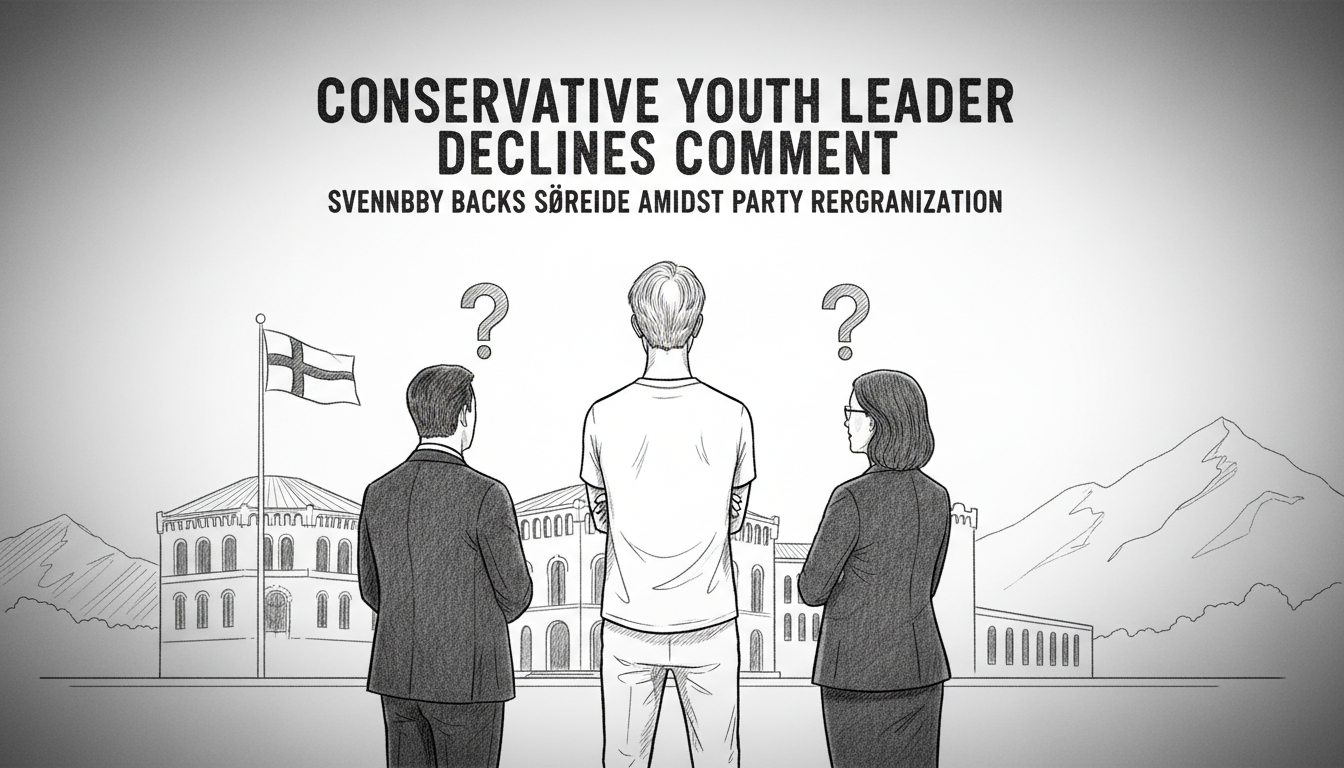The leader of Norway's Young Conservatives has refused to say whether fellow party member Nikolai Astrup should withdraw from the Conservative Party leadership race. Ola Svenneby, who is also a candidate for deputy leader position, would not directly answer questions about Astrup potentially challenging Ine Eriksen Søreide for the top party position.
Svenneby expressed clear personal support for Søreide during recent statements. He told reporters he believes Søreide represents the best choice for party leadership. He confirmed his intention to back her candidacy in the upcoming leadership contest.
Multiple sources identified Svenneby as a likely deputy leader candidate on Thursday. This would position him alongside Søreide if she secures the leadership role. The emerging leadership team reflects ongoing party reorganization efforts following recent political challenges.
Svenneby emphasized that final decisions about party leadership positions rest with official party bodies. He stated the selection committee and national convention will determine the new leadership structure. This approach maintains traditional party processes during leadership transitions.
Norwegian political parties typically undergo careful leadership transitions following electoral setbacks. The Conservative Party faces important decisions about its future direction after recent polling declines. Leadership contests often reveal underlying tensions between party factions.
The current situation highlights complex dynamics within Norway's center-right political landscape. Younger generation politicians like Svenneby represent evolving perspectives within traditional party structures. Their positioning during leadership contests can signal future political alignments.
International observers should note that Norwegian party leadership selections involve multiple stakeholder groups. Regional party organizations, youth wings, and parliamentary groups all influence these decisions. The process typically emphasizes consensus-building over confrontational politics.
This leadership contest occurs during a period of significant political realignment across Nordic countries. Conservative parties throughout the region face similar challenges balancing traditional values with evolving voter expectations. The Norwegian Conservative Party's decisions may influence broader regional political trends.
The emerging leadership team will need to address several immediate challenges. These include improving party polling numbers, developing policy responses to economic concerns, and rebuilding voter confidence. The leadership selection process represents a critical first step in this renewal effort.
Norwegian politics operates within a multi-party system where coalition-building remains essential. The Conservative Party's internal stability directly affects its ability to form effective governing partnerships. Leadership contests therefore carry implications beyond internal party politics.
Party members will watch carefully how potential leaders navigate these delicate internal discussions. The ability to maintain party unity during leadership transitions often predicts future electoral success. All contenders face pressure to demonstrate this capacity during the current selection process.
